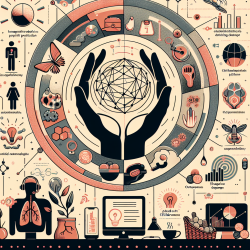Introduction
In the realm of public health, the identification and management of tuberculosis (TB) in hard-to-reach populations is a significant challenge. These populations often include migrants, homeless individuals, drug users, and others who face barriers to accessing healthcare. A recent systematic review titled "Effectiveness of service models and organisational structures supporting tuberculosis identification and management in hard-to-reach populations in countries of low and medium tuberculosis incidence" provides valuable insights into effective strategies for addressing these challenges.
Key Findings from the Systematic Review
The review analyzed various service models and organizational structures to determine their effectiveness and cost-effectiveness in delivering TB services to hard-to-reach populations. Here are some of the critical findings:
- Community health workers (CHWs) from the same migrant community, street teams, and peers significantly improved TB screening uptake by providing health education, promoting TB screening, and organizing contact tracing.
- Mobile TB clinics and specialized TB clinics were found to be effective at identifying and treating active TB cases and were likely to be cost-effective.
- There was no significant difference in treatment outcomes when directly observed therapy (DOT) was delivered at a health clinic or at a convenient location in the community.
Implications for Practitioners
For practitioners working with hard-to-reach populations, these findings underscore the importance of tailoring TB services to the unique needs of these groups. Here are some practical implications:
- Engage Community Health Workers: Utilizing CHWs from within the community can enhance trust and improve participation in TB screening and treatment programs.
- Implement Mobile and Specialized Clinics: Bringing services directly to the community through mobile clinics or specialized centers can increase access and improve TB case detection and management.
- Foster Collaboration: Improved cooperation between healthcare services, community organizations, and peers can lead to better health outcomes and increased treatment adherence.
Encouraging Further Research
While the review provides valuable insights, it also highlights the need for further research to evaluate the (cost-)effectiveness of interventions on TB identification and management in hard-to-reach populations. Practitioners are encouraged to contribute to this body of knowledge by documenting and sharing their experiences and outcomes.
Conclusion
Optimizing TB management in hard-to-reach populations requires innovative service models and organizational structures. By leveraging community resources, enhancing cooperation, and employing mobile and specialized clinics, practitioners can improve TB outcomes in these vulnerable groups. Continued research and data sharing are crucial for refining these strategies and ensuring their effectiveness.
To read the original research paper, please follow this link: Effectiveness of service models and organisational structures supporting tuberculosis identification and management in hard-to-reach populations in countries of low and medium tuberculosis incidence: a systematic review.










